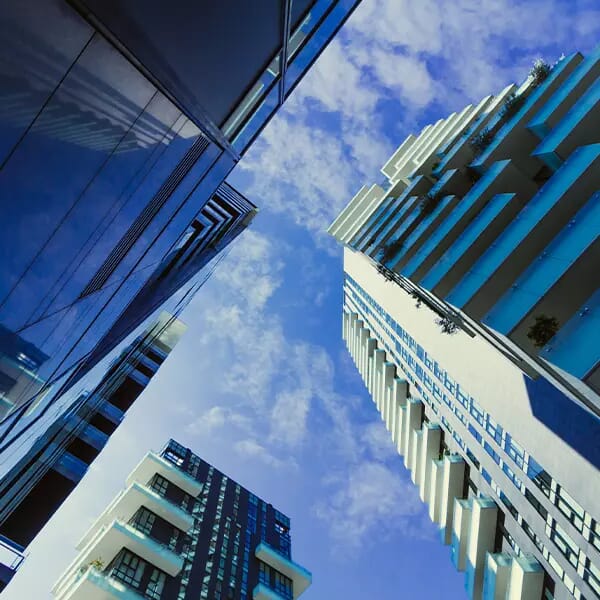 Sung Jin Cho
Sung Jin ChoWhat's Next for the Retail Sector?
Looking back and going forward
May 12, 2022Real Estate
The GRI Global Committee gathered C-Level real estate investors, asset owners, operators, and developers from 20+ countries to have a better look at the future of retail. How is the sector is responding during year three of the COVID-19 pandemic?
Important Takeaways:
From an investment view, the European retail economy is struggling. Despite the evident market recovery, the shopping center sector is still under pressure and hasn’t thrived yet. It is not yet clear when shopping center rents are going to stabilize. Retail parks, in this scenario, seem to be recovering better as they have stabilized rents and investors are less afraid of bidding.
Looking at the big picture, there is far less liquidity. How much European asset investors are currently raising on one property versus another, will depend mostly on the underlying value of the land.
In North and South America, the retail scenario is significantly different. The main common factor, unlike in Europe, is that not only the sector has recovered, but it has shown rental marks that surpassed 2019. Shopping malls are seeing a representative recovery in tenants’ performance as they are hitting record sales numbers.
While the e-commerce trend is constantly challenging real estate retail, the Brazilian investment landscape shows that the first quarter of 2022 increased sales by 20% compared to 2019. More traffic in available spaces also shows a significant recovery. Primary markets from Mexico are stabilizing vacancy from 18% to just 4%.

However, traditional models of department stores, especially in the US, do seem to be facing a crisis as consumers are going to online marketplaces to buy everything they need. What will change about going to physical malls is the possibility to discover new products and retail experiences through social interaction. Everything is being redesigned to enhance the consumer experience.
In some countries, customers culturally have a strong relationship with shopping malls. In Asian countries such as Singapore, the shopping center is already not just a place to shop but also to gather local people beyond touristic places. The same for Brazilian malls, which receive around 200 million people annually. In this regard, collecting data will be key when targeting experiential innovations in the long run.
Moreover, both investors and asset managers are seeing an uptake in outdoor properties. Open-air and street retail assets from several countries are currently gaining more value and helping retailers to thrive. This trend contributes to creating social hubs where people are likely to interact and spend more time there.
One of the participants also mentioned that multifamily buildings in South America have been a great opportunity along with the current retail scenario. Apparently, there have been booming and successful multifamily and built-to-rent developments inside shopping malls, as they keep sales 20 to 30% higher than residentials next door. Indeed, institutional investors highlighted the fact that the current e-commerce challenge implements an even larger gap between desirable top assets and secondary ones that might lack total liquidity. The market, however, still hasn’t accounted for inflation in the record sales numbers. Therefore, results might not look that appealing after downward adjustments.
As we turn the corner on 2022, real estate leaders agreed that retail markets that suffered from disruptive shifts are now showing signs of recovery. The recent health crisis has brought new trends in retail and the sector will have to be redesigned, but it may even accelerate higher returns for investors. Furthermore, adjusting for inflationary markets will change the evaluation in the short term.
Important Takeaways:
- European scenario is still recovering and rents are not stabilized;
- In North and South America the sector is apparently recovering way faster;
- Enhancing the consumer experience will be crucial to thrive;
- Open-air and street retail assets are trends to stay;
- Despite the optimism, the sector hasn’t accounted for inflation, and results might not look that appealing.
From an investment view, the European retail economy is struggling. Despite the evident market recovery, the shopping center sector is still under pressure and hasn’t thrived yet. It is not yet clear when shopping center rents are going to stabilize. Retail parks, in this scenario, seem to be recovering better as they have stabilized rents and investors are less afraid of bidding.
Looking at the big picture, there is far less liquidity. How much European asset investors are currently raising on one property versus another, will depend mostly on the underlying value of the land.
In North and South America, the retail scenario is significantly different. The main common factor, unlike in Europe, is that not only the sector has recovered, but it has shown rental marks that surpassed 2019. Shopping malls are seeing a representative recovery in tenants’ performance as they are hitting record sales numbers.
While the e-commerce trend is constantly challenging real estate retail, the Brazilian investment landscape shows that the first quarter of 2022 increased sales by 20% compared to 2019. More traffic in available spaces also shows a significant recovery. Primary markets from Mexico are stabilizing vacancy from 18% to just 4%.

However, traditional models of department stores, especially in the US, do seem to be facing a crisis as consumers are going to online marketplaces to buy everything they need. What will change about going to physical malls is the possibility to discover new products and retail experiences through social interaction. Everything is being redesigned to enhance the consumer experience.
In some countries, customers culturally have a strong relationship with shopping malls. In Asian countries such as Singapore, the shopping center is already not just a place to shop but also to gather local people beyond touristic places. The same for Brazilian malls, which receive around 200 million people annually. In this regard, collecting data will be key when targeting experiential innovations in the long run.
Moreover, both investors and asset managers are seeing an uptake in outdoor properties. Open-air and street retail assets from several countries are currently gaining more value and helping retailers to thrive. This trend contributes to creating social hubs where people are likely to interact and spend more time there.
One of the participants also mentioned that multifamily buildings in South America have been a great opportunity along with the current retail scenario. Apparently, there have been booming and successful multifamily and built-to-rent developments inside shopping malls, as they keep sales 20 to 30% higher than residentials next door. Indeed, institutional investors highlighted the fact that the current e-commerce challenge implements an even larger gap between desirable top assets and secondary ones that might lack total liquidity. The market, however, still hasn’t accounted for inflation in the record sales numbers. Therefore, results might not look that appealing after downward adjustments.
As we turn the corner on 2022, real estate leaders agreed that retail markets that suffered from disruptive shifts are now showing signs of recovery. The recent health crisis has brought new trends in retail and the sector will have to be redesigned, but it may even accelerate higher returns for investors. Furthermore, adjusting for inflationary markets will change the evaluation in the short term.



